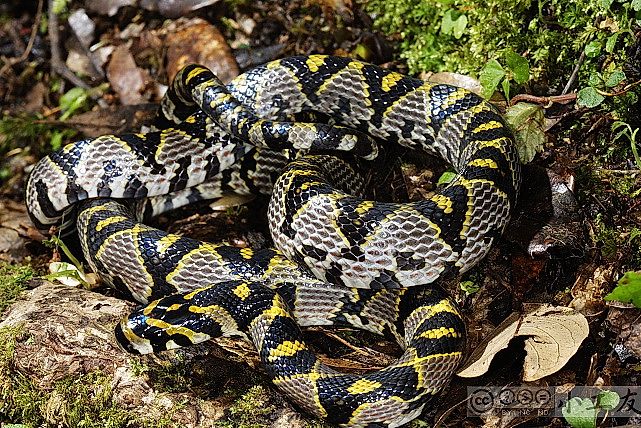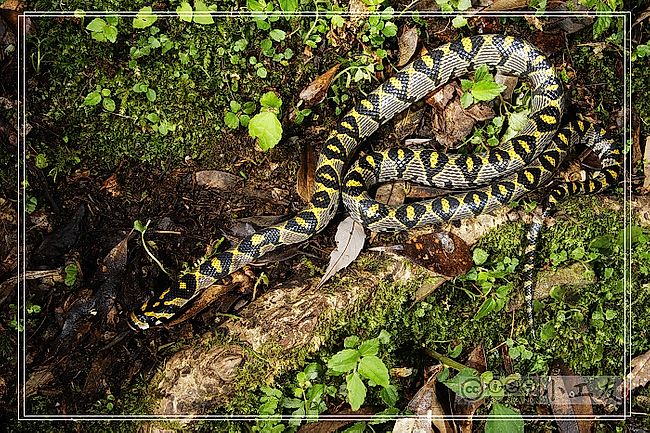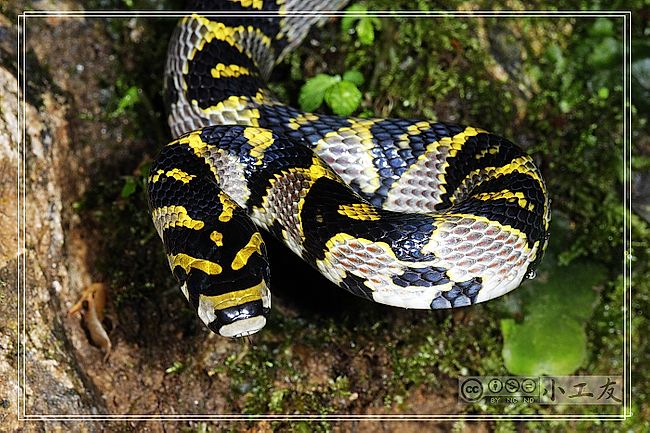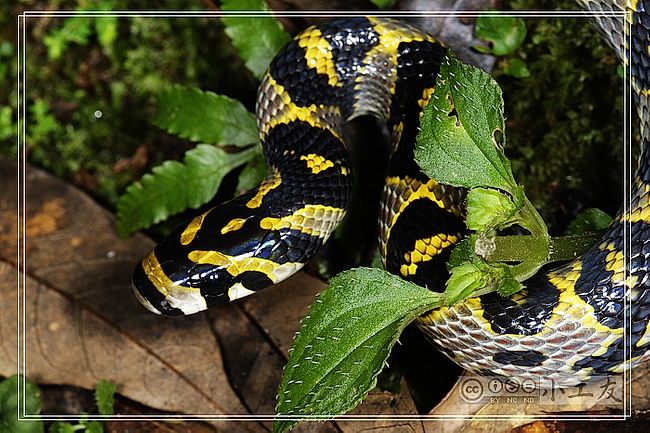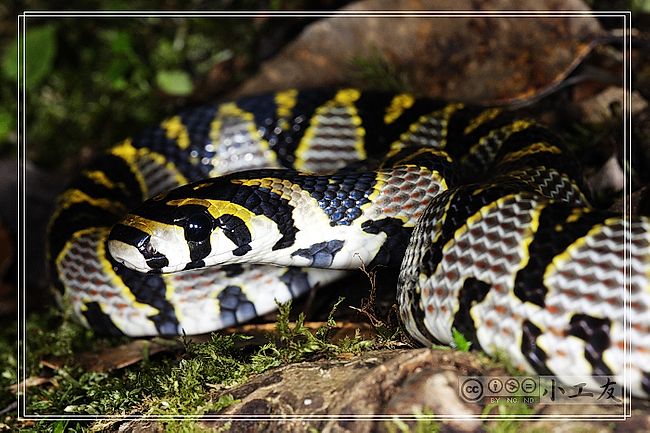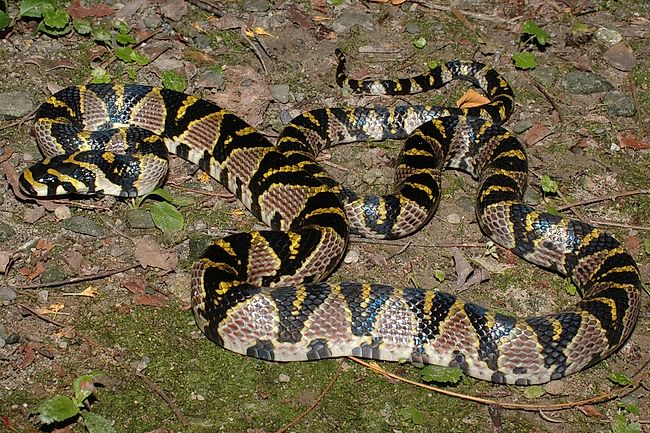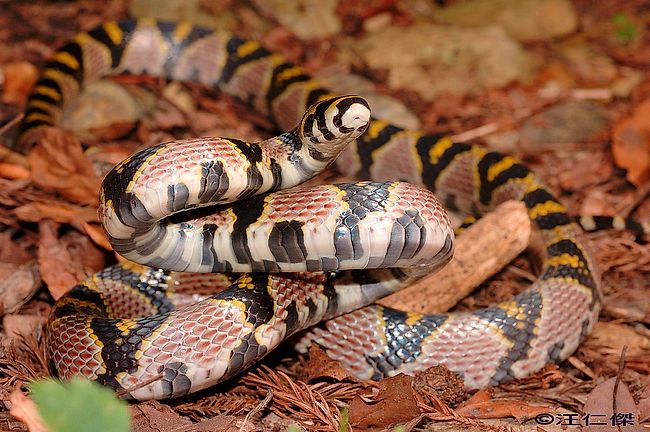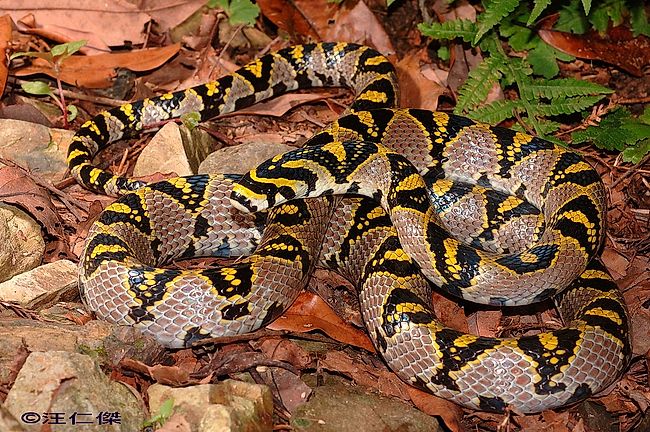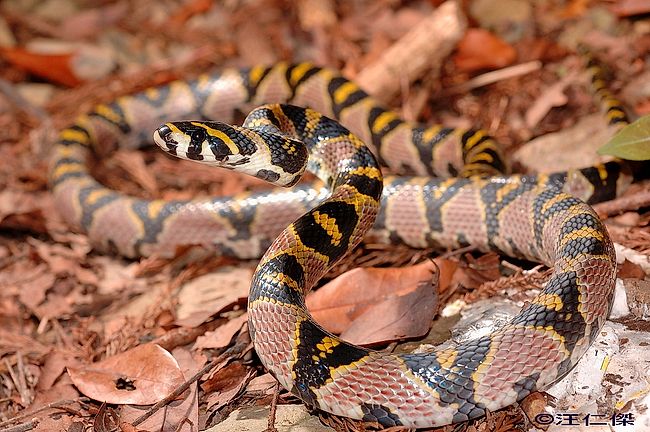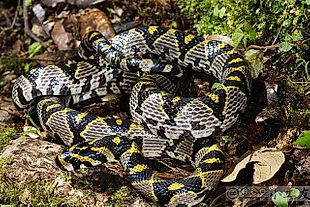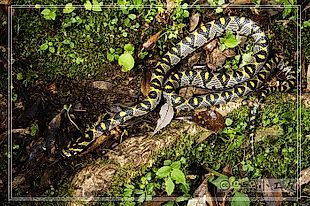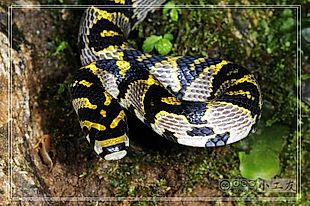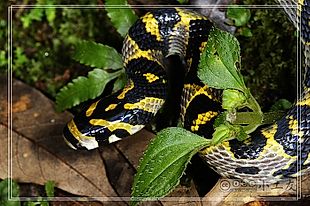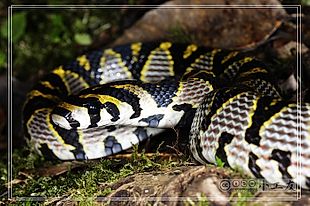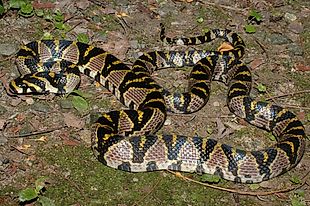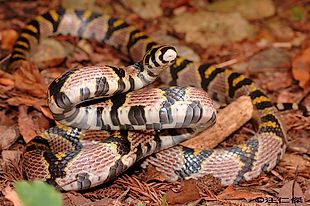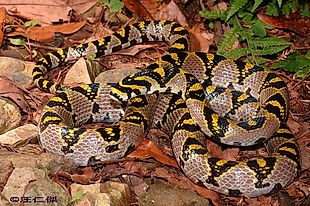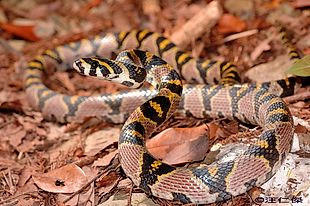Euprepiophis mandarina
Mandarin Ratsnake
高 砂蛇 (gao1sha1she2)
Status: Protected (Class III)
Non-venomous
Videos
Family
Colubridae, subfamily Colubrinae
Max. length
140 cm
Occurrence in Taiwan
Northern, Central and Eastern Taiwan, at altitudes of 1000-2500 m. Endangered.
Global Distribution
India, N Myanmar, Laos, Vietnam, Taiwan, China (westward to SE Tibet and northward to Liaoning, not including Hainan).
Description
Medium-sized snake; total length up to 140 cm. There are 17-25 (21-23 at mid-body) rows of scales, which are smooth and shiny. Head is oval with slightly blunt snout; body is medium stout; tail is medium in length. Eye is medium-sized; iris is dark brown to blackish and pupil is round, black, and less distinct from rest of eye. Tongue is flesh-colored with gray fork tips. Upper head is yellow and the labials are white, except three broad, black cross-bands; the anterior one is located on the snout, ending on the first infralabials, the median one extends from top of head, divides over eye, to the labials, and the posterior one extends postolaterally from top of posterior head to base of jaw. Upper body and tail are purplish-gray or even reddish, with a series of conspicuous, yellow-margined, yellow-centered, black saddles separated from one another by length of 1-2 scales. There may also be a lateral series of small, black spots. Ventral head is white except the black spots on the gulars and some infralabials. Ventral body and tail are white with scattered quadrangular marks of prominent black pigment which are irregularly arranged on sides. The anal scale is divided and subcaudals are paired.
Biology & Ecology
This diurnal or crepuscular snake inhabits mountain forest floors, or environments with scattered rocks and bushes. It preys on shrews and other small mammals, occasionally on lizards and lizard eggs. In summer, females produce 5-16 eggs of approximately 3x1.5 cm per clutch, which hatch after 42- 55 days.
This snake can often be found in the vicinity of alpine restaurants and guesthouses, as it is lured there by the rodents living in the trash produced by those establishments.
Etymology
Euprepiophis mandarina can be translated as "pretty mandarin snake": "euprepes" is Greek for "good looking", fair; "ophis" means "snake"; "mandarinus" is a Latinized form of the word "mandarin".
The Chinese name 高砂蛇 (gao1sha1she2) consists of the three characters for "high/tall", "sand/gravel" and "snake". The first two characters 高砂 are a Japanese term for "high mountain" or "high sand" and represent the name the Japanese snake researcher S. Takahashi (高橋精) gave this species in the 1930s.
Notes
The Mandarin Ratsnake belongs to the taxonomical Family Colubridae and within this to the extremely large Subfamily known as Colubrinae. Formerly the Mandarin Ratsnake was considered part of the excessively comprehensive genus Elaphe, but its current genus, Euprepiophis, was very recently resurrected due to phylogenetic research.
References:
- Utiger, Urs, Notker Helfenberger, Beat Schätti, Catherine Schmidt, Markus Ruf and Vincent
Ziswiler (2002); "Molecular systematics and phylogeny of Old World and New World ratsnakes,
- Elaphe Auct., and related genera (Reptilia, Squamata, Colubridae)." Russ. J. Herpetol. 9 (2): 105-124).
(Source)
Further Info
- Reptile Database
- Wikipedia
